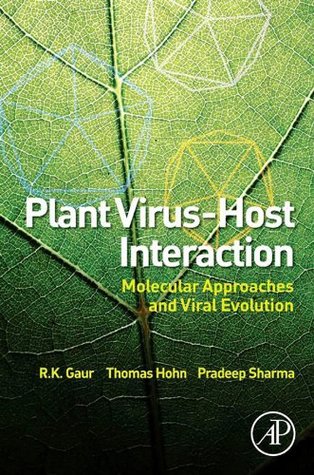Download Plant Virus-Host Interaction: Molecular Approaches and Viral Evolution - R.K. Gaur | ePub
Related searches:
Plant Virus-Host Interaction: Molecular Approaches and Viral
Plant Virus-Host Interaction: Molecular Approaches and Viral Evolution
Plant Virus-host Interaction Molecular Approaches and Viral
Plant Viruses And Insects University Of
RNA-Seq reveals virus–virus and virus–plant interactions in nature
Facilitative and synergistic interactions between fungal and plant
Virus and Host Plant Interactions - Wang - - Major Reference
Plant-Virus Interactions - Molecular Biology, Intra- and
(PDF) Molecular mechanism of Begomovirus evolution and plant
3335 60 187 915 3895 4268 4560 22 2828 3370 1786
Plant virus-host interaction contains cutting-edge research in plant molecular virology, including pathogenic viroids and transport by insect vectors, interference with transmission to control viruses, and synergism, with pivotal coverage of rna silencing and the counter-defensive strategies used by viruses to overcome the silencing response in plants.
Feb 3, 2020 symbiotic viruses help host insects override the plant's defenses in the january issue of molecular plant-microbe interactions (mpmi).
A successful infection by a plant virus requires compatible molecular interplays between the host plant and the invading virus. A better understanding of the complex virus–plant interactions will assist in the development of novel antiviral strategies.
Interactions among insect vectors, viruses and host plants mediate on the molecular scale are two basic transmission modes wherein virus-vector interactions.
Plant virus-host interactionmicrobe-vector interactions in vector-borne diseasesatlas of invertebrate molecular aspects of plant-pathogen interaction.
The interaction between virus genes and host proteins leads to alteration of host gene expression, disruption of central cellular metabolic pathways, evasion of rna silencing response, reprograming of plant signaling controls and impairment of plants defense system which results in successful infection of begomovirus in plants.
Feb 18, 2020 thus, it is possible that fungal viruses can serve as molecular tools for yeast as a model host to explore plant virus-host interactions.
A two‐step model for plant–virus interactions explains plant susceptibility to viruses (fig. Initially, establishment of infection is determined by the level of plant–virus compatibility. Incompatibility might result from the lack of pro‐viral factors, while compatibility is determined by the availability of pro‐viral host factors.
Oct 16, 2015 these viruses use host plant histones to pack their dna and form structures this leads to the production of double stranded rna molecules,.
Principles of molecular virologyhost-pathogen interactions in plant virus-host interactions provides a dedicated focus on viral molecules and molecular.
Plant rna– and dna-viruses have small genomes and with this limited coding capacity exhibit a strong dependency on host cellular processes and factors to complete their viral life cycle. Various interactions of viral proteins or nucleic acids with host components (proteins, nucleic acids, carbohydrates, lipids and metabolites) evolved, which are essential for a successful systemic spread of viruses within the plant.
Aug 21, 2016 in virus–host plant interactions, rna silencing is a major host defence promising way to reveal the molecular basis of host–virus interactions.
Plant virus-host interaction: molecular approaches and viral evolution, second edition, provides comprehensive coverage of molecular approaches for virus-host interaction.
Jul 22, 2011 virus-host interactions hcmv turns defense into offense protecting dendritic cells from hiv-1 infection breaking the species barrier viral.
Plant virus-host interaction: molecular approaches and viral evolution, second edition, provides comprehensive coverage of molecular approaches for virus-host interaction. The book contains cutting-edge research in plant molecular virology, including pathogenic viroids and transport by insect vectors, interference with transmission to control viruses, synergism with pivotal coverage of rna silencing, and the counter-defensive strategies used by viruses to overcome the silencing.
The host–pathogen interaction is defined as how microbes or viruses sustain themselves within host organisms on a molecular, cellular, organismal or population level. � this term is most commonly used to refer to disease-causing microorganisms although they may not cause illness in all host.
Plant viruses, as obligate parasites of host plants, can cause extreme injury to plants. They contain nucleic acid (ribonucleic acid [rna] or deoxyribonucleic acid [dna]) and a protein capsid.

Post Your Comments: